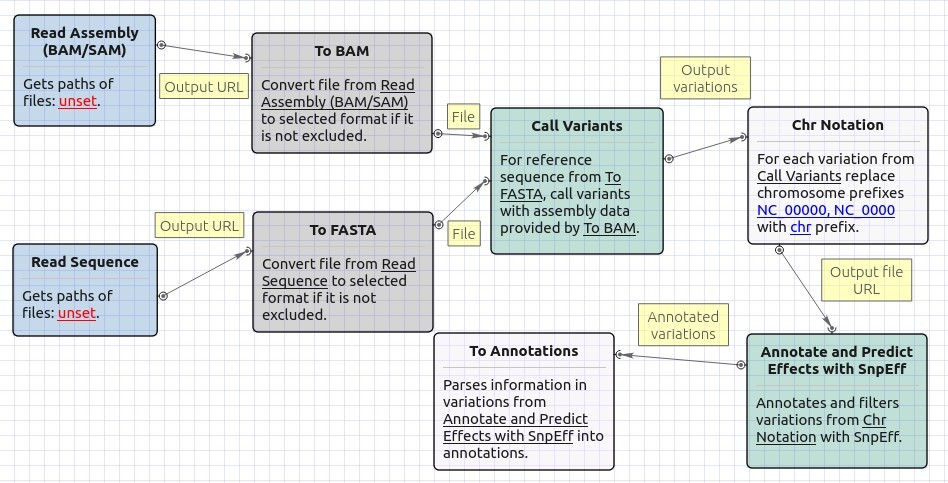Variant Calling and Effect Prediction
The workflow sample described below calls variants for an input assembly and a reference sequence using SAMtools mpileup and bcftools. Additionally, it predicts the effects of the variants using SnpEff.
How to Use This Sample
If you haven’t used the workflow samples in UGENE before, refer to the “How to Use Sample Workflows” section of the documentation.
Workflow Sample Location
The workflow sample “Variant Calling and Effect Prediction” can be found in the “NGS” section of the Workflow Designer samples.
Workflow Image
The opened workflow appears as follows:
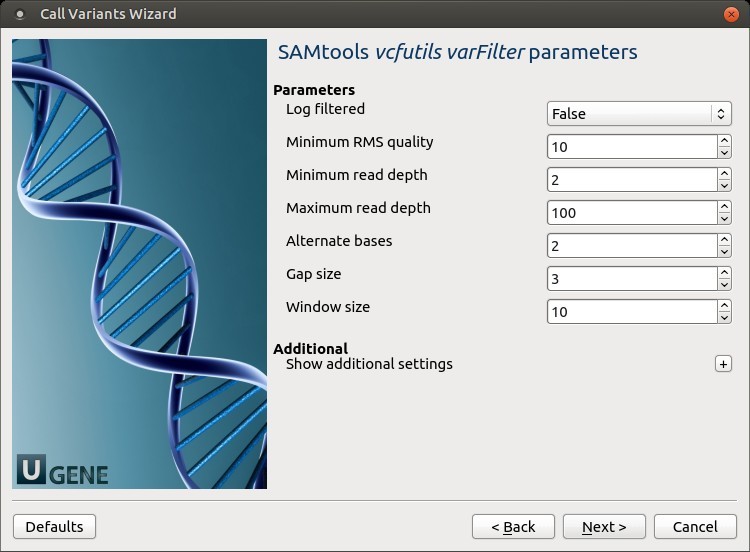
Workflow Wizard
The wizard consists of 7 pages:
Input Reference Sequence and Assembly: On this page, input files must be set.
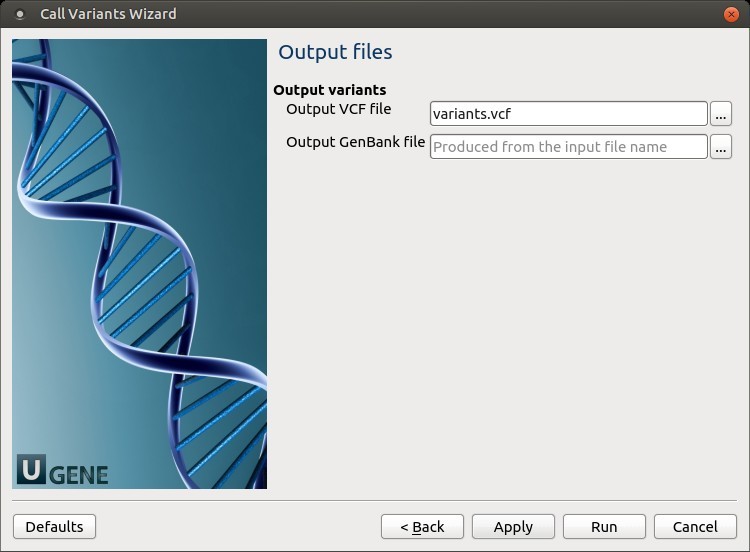
SAMtools mpileup Parameters: You can change the SAMtools mpileup parameters here.
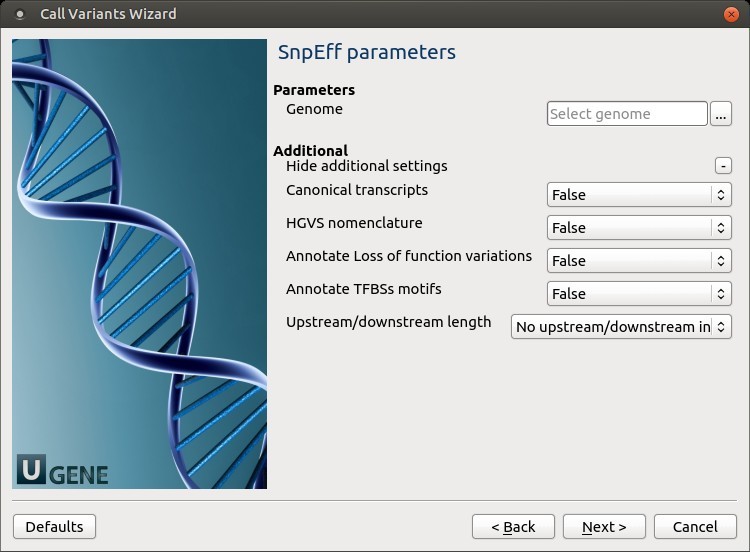
The following parameters are available:
Parameter Description Count anomalous read pairs Do not skip anomalous read pairs in variant calling (mpileup) (-A). Disable BAQ computation Disable probabilistic realignment for BAQ computation. This helps to reduce false SNPs caused by misalignments. (-B) Mapping quality downgrading coefficient Coefficient for downgrading mapping quality for reads with excessive mismatches. The recommended value for BWA is 50. (-C) Max number of reads per input BAM Maximum number of reads per input BAM at a position (mpileup)(-d). Extended BAQ computation This option helps sensitivity for MNPs, but may reduce specificity (-E). BED or position list file List of regions or sites where pileup or BCF should be generated (-l). Pileup region Only generate pileup in the specified region STR (-r). Minimum mapping quality Minimum mapping quality required for an alignment to be used (-q). Minimum base quality Minimum base quality required for a base to be considered (-Q). Illumina-1.3+ encoding Assume quality is in Illumina 1.3+ encoding (-6). Gap extension error Phred-scaled gap extension sequencing error probability. Reducing INT leads to longer indels (-e). Homopolymer errors coefficient Coefficient for modeling homopolymer errors. Sequencing error of an indel of size s is modeled as INT*s/l (-h). No INDELs Do not perform INDEL calling (-I). Max INDEL depth Skip INDEL calling if the average per-sample depth is above INT (-L). Gap open error Phred-scaled gap open sequencing error probability. Reducing INT leads to more indel calls (-o). List of platforms for indels List of platforms from which indel candidates are obtained. It is recommended to use sequencing technologies with low indel error rates like ILLUMINA (-P). SAMtools bcftools View Parameters: You can modify the SAMtools bcftools view parameters here.
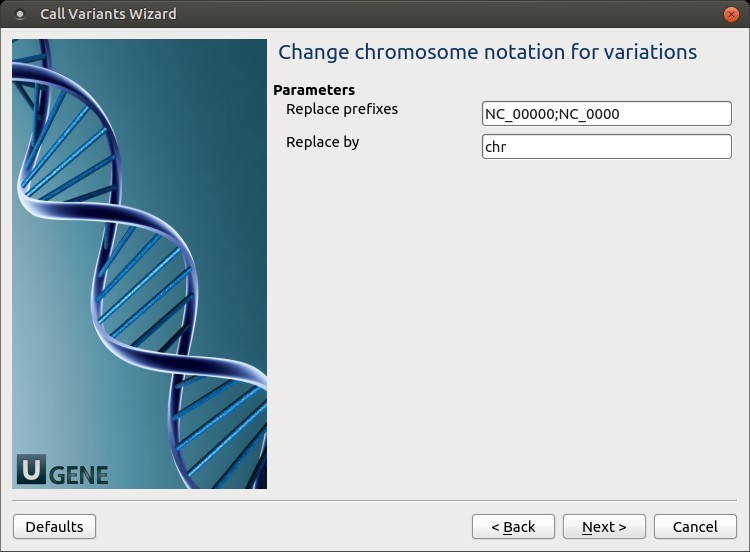
The following parameters are available:
Parameter Description Retain all possible alternate Retain all possible alternate alleles at variant sites. Default discards unlikely alleles. Indicate PL Indicate PL generated by r921 or before. No genotype information Suppress all individual genotype information. A/C/G/T only Skip sites where the REF field is not A/C/G/T. List of sites List sites for which information is outputted. QCALL likelihood Output the QCALL likelihood format. List of samples List of samples to use. The first column gives sample names, and the second gives ploidy (1 or 2). Min samples fraction Skip loci where the fraction of samples covered by reads is below FLOAT. Per-sample genotypes Call per-sample genotypes at variant sites. INDEL-to-SNP Ratio Ratio of INDEL-to-SNP mutation rate. Max p(ref D) Prior allele frequency spectrum STR can be full, cond2, flat, or a file from error output from a previous variant calling (bcf view) (-P). Mutation rate Scaled mutation rate for variant calling (bcf view) (-t). Pair/trio calling Enable pair/trio calling. Use option -s to configure the trio members and order. Valid values: “pair”, “trioauto”, “trioxd”, “trioxs”. N group-1 samples Number of group-1 samples, used for dividing samples into two groups for contrast SNP calling or association test. N permutations Number of permutations for association test (effective only with -1). Max P(chi^2) Only perform permutations for P(chi^2). SAMtools vcfutils varFilter Parameters: Configure SAMtools vcfutils parameters on this page.
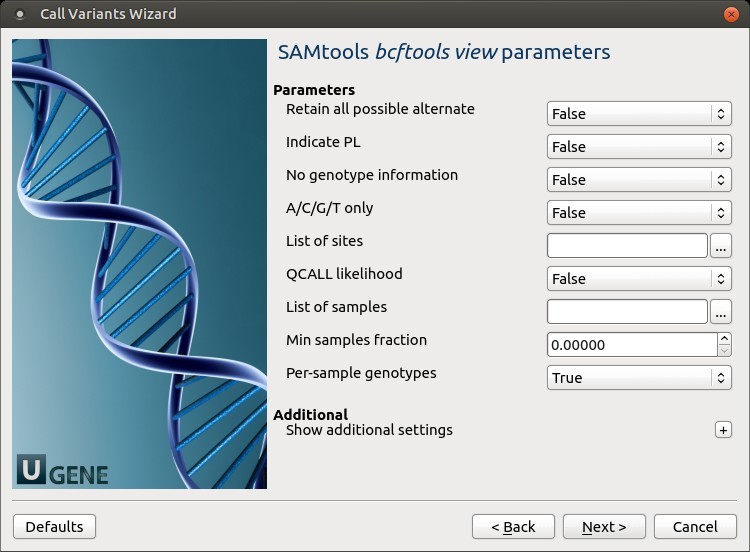
The following parameters are available:
Parameter Description Log filtered Print filtered variants into the log (varFilter) (-p). Minimum RMS quality Minimum RMS mapping quality for SNPs (varFilter) (-Q). Minimum read depth Minimum read depth (varFilter) (-d). Maximum read depth Maximum read depth (varFilter) (-D). Alternate bases Minimum number of alternate bases (varFilter) (-a). Gap size SNP within INT bp around a gap to be filtered (varFilter) (-w). Window size Window size for filtering adjacent gaps (varFilter) (-W). Strand bias Minimum P-value for strand bias given PV4 (varFilter) (-1). BaseQ bias Minimum P-value for baseQ bias (varFilter) (-2). MapQ bias Minimum P-value for mapQ bias (varFilter) (-3). End distance bias Minimum P-value for end distance bias (varFilter) (-4). HWE Minimum P-value for HWE with F<0 (varFilter) (-e). Change Chromosome Notation for Variations: Change chromosome notation for variations on this page.
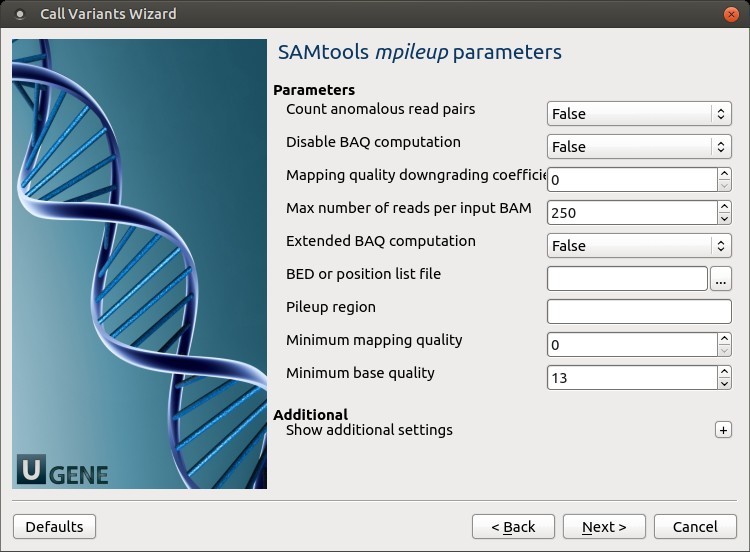
The following parameters are available:
Parameter Description Replace prefixes Input the list of chromosome prefixes to replace, e.g., “NC_000”. Separate different prefixes by semicolons. Replace by Input the prefix to set instead, e.g., “chr”. SnpEff Parameters: Configure SnpEff parameters on this page.
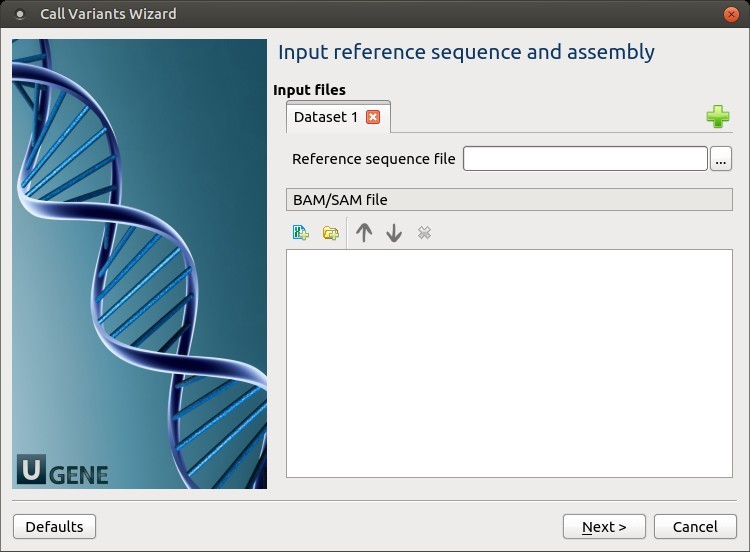
The following parameters are available:
Parameter Description Genome Select the target genome. The genome data will be downloaded if not found. Canonical transcripts Use only canonical transcripts. HGVS nomenclature Annotate using HGVS nomenclature. Annotate Loss of function variations Annotate Loss of function variations (LOF) and Nonsense mediated decay (NMD). Annotate TFBSs motifs Annotate transcription factor binding site motifs (only for latest GRCh37). Upstream/downstream length Upstream and downstream interval size. Eliminate by using 0 length. Output Files Page: On this page, you can select output files.
